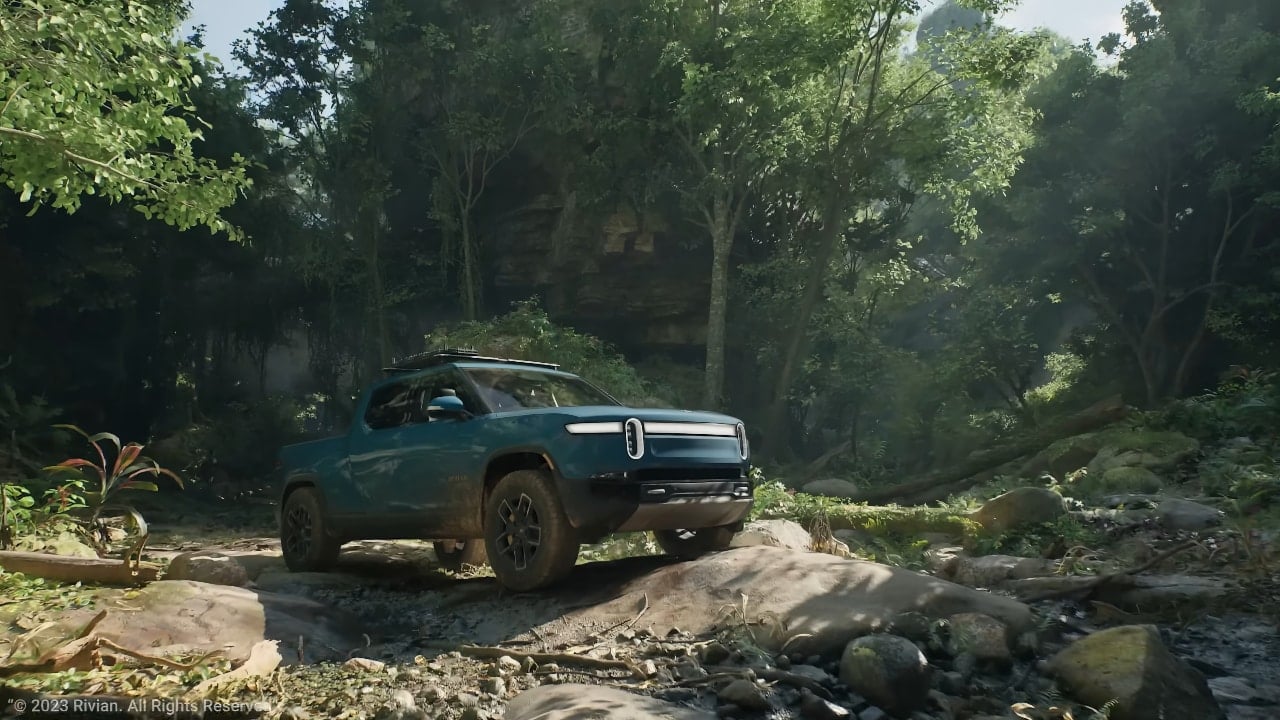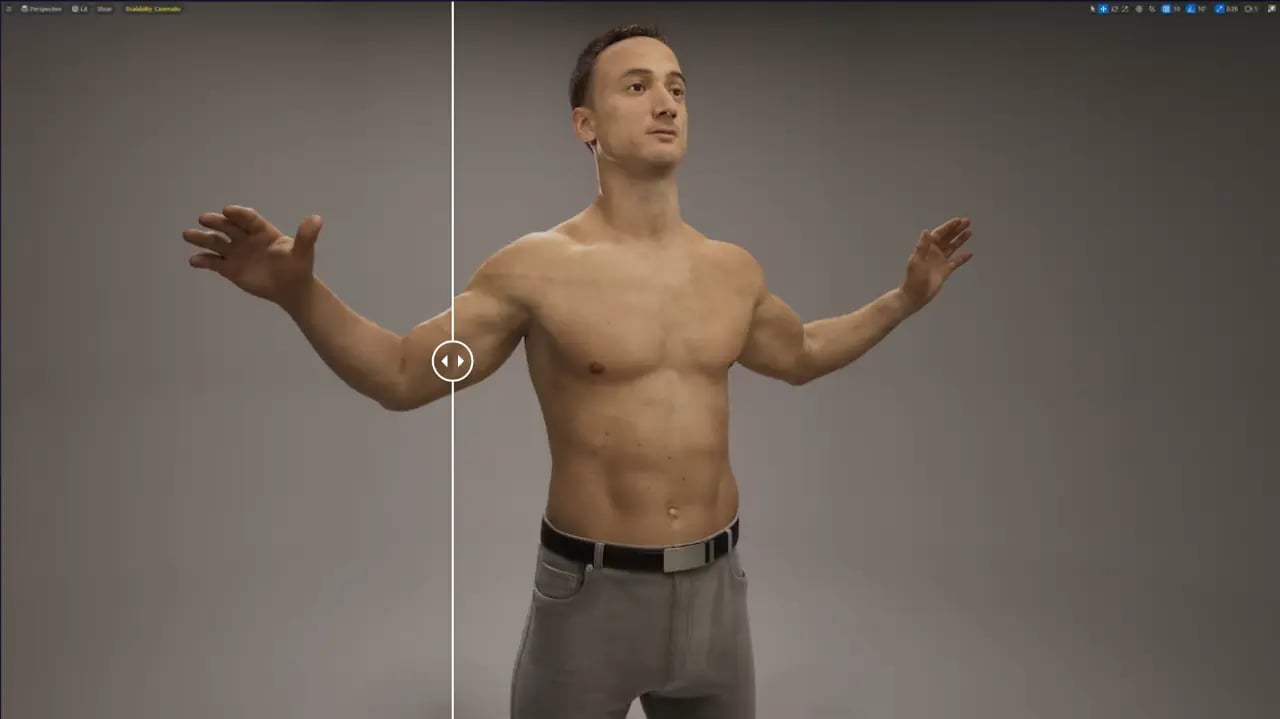
Unreal Engine 5 quite literally changed the CGI landscape and Unreal Engine 5.2 is now available to allow creatives to do even more.
Epic Games published the public roadmap for Unreal Engine 5.2 back at the GDC 2023 in March and it adds a fair deal for a point release. But then this is Unreal Engine 5, so we shouldn’t really be surprised.
With native support for Apple Silicon now added to the Unreal Editor, the Universal Binary of Unreal Engine that natively supports both Apple Silicon and Intel CPUs is now available to download from the Epic Games launcher. Here are some of the highlights that you can expect.
Procedural Content Generation (PCG)
PCG is a toolkit for creating large populations, such as forests, using rules instead of manually placing assets. Much like in dedicated landscape creation applications like Terragen and Vue D'Esprit, the goal is to use an algorithmic approach to placing large quantities of of objects like trees, boulders, and bushes in a large landscape with natural looking variations to create richly detailed environments for realtime applications.
Substrate
Substrate is a new shading model for Unreal that gives Unreal users a more powerful toolkit for building materials and looks. Materials in 3D graphiics are core to achieving photorealism, so the enhanced materials system is big. Also related to materials is a suite of UV tools for Unreal, part of the new Geometry toolset that includes modeling tools. With Substrate it will be possible to add variations to paint on a car or add mud to the surface of the car.
Path Tracing
Real time path tracing is coming to Unreal. Ray tracing evolved, a step up in photorealism from ray tracing is coming to realtime graphics. While path tracing exists in Unreal now, it's not yet at feature parity with the Unreal rasterizer. The path tracing overhaul in Engine 5.2 narrows that gap, which will lead to more photorealism in games, and also faster production rendering with render engines like the Unreal-based TwinMotion.
Animation
The animation tools in Unreal are getting ever closer to the animation tools in high end animation systems like Maya and Cinema4D as well. The animation rig tools and curve editors are all getting significant enhancements, and there will be an experimental physics based controller enabling secondary animations driven entirely by physical models.

To showcase the power of all this, there’s a new New ML Deformer sample available that showcases how Unreal Engine machine learning technology can be used to create a high-fidelity real-time character for PC and consoles with deformations driven by full muscle, flesh, and cloth simulation. The download includes an interactive demo sequence that shows muscles bulging and sliding under the skin, and folds forming on clothing. Users can also compare the results with ML Deformer on and off, and animate the model with the included Control Rig asset.
Metahumans
The realism of Metahumans is improving. The design tools are gaining sophistication, and the editor allows blending between Metahumans to create new ones. The skin textures are more detailed, and combined with the updated animation tools and rendering features are getting ever closer to escaping the Uncanny Valley. Metahuman Creator allows sculpting a human face, or selecting three faces and blending various aspects of the three to edit a custom Metahuman. The body sculpting isn't as sophisticated as the face sculpting yet. Clothing is based on presets, and at present there isn't a way to import clothing. The facial deformations and skin textures look excellent now though.
Verse
Epic has introduced a new programming language for Unreal called Verse. Before Verse the options available were purely visual programming or C++, and Verse lies more or less in the middle. Visual programming can be quite powerful, but as anyone who's worked with software like Houdini knows, often it's easier to write code to build custom logic than to program that logic with nodes once the node editor starts looking like spaghetti. Using C++ however can be quite a trial, because it has a slower feedback loop due to the need to compile and link code before executing it. Verse, being a built in scripting language, can deliver near instant feeback, making coding much easier and quicker than C++ while also not being limited by node-based visual programming.
Virtual Production
This aspect of Unreal Engine 5.2 didn’t get the notice it deserved when it was introduced, probably due to being introduced at a conference dedicated to gaming rather than to filmmaking, but there are some great new features here also and Epic has bumped them up in the running order for the release.
Unreal 5.2 supports multiple virtual cameras, with better tracking options and control options. There's a DMX control console with an updated DMX mapping user interface. For anyone not familiar with DMX, start exploring it. As film lighting is going almost fully digital, the capabilities offered by DMX controlled lighting are expanding with it. Outputting data from an explosion in virtual space over DMX to a set of SkyPanels eliminates a complex programming step to match real world lighting to the virtual. And that's just scratching the surface, since DMX can control pretty much any parameter available, including for example orientation on a PTZ light fixture.
The ICVFX console gives filmmakers access to the tools needed to configure the virtual stage to suit their productions, and the iPad version is coming now with Engine 5.2. It uses OCIO for color matching to ensure consistent color between the virtual and real worlds, and Chromakey Cards can be placed where they need to be in the volume, just like Light Cards.
For now many of the virtual production features will be accessible only to high end productions because Volume sound stages are still fairly uncommon, and even as far as computers have come, it still requires a rather high end system to handle the needs of virtual production at the studio level. That said, the software tools are available and accessible to all, and even without access to the high end Volumes and massive workstations, still useful.
More importantly, the tools are available for the independent filmmakers to start learning how to use them.
One of the factors that has prevented photorealistic 3D graphics from become more common in smaller budget productions has been rendering time. Small independent productions simply can't afford the thousands of compute nodes required to render photorealistic mattes to use in their films. The improvements in Unreal Engine 5.2 are eliminating that gap as it gets closer and closer to achieving photorealism in realtime rendering on mainstream computers, and virtual production is gradually becoming more accessible as well.
Tags: Post & VFX


Comments